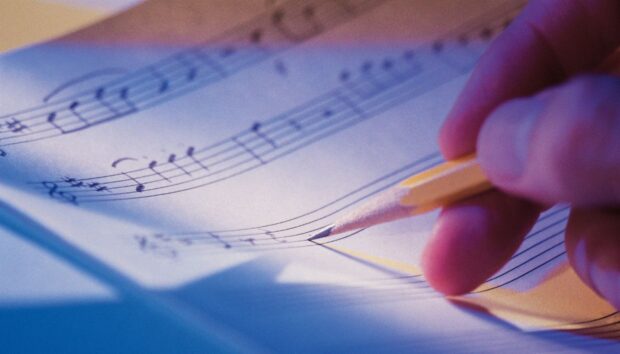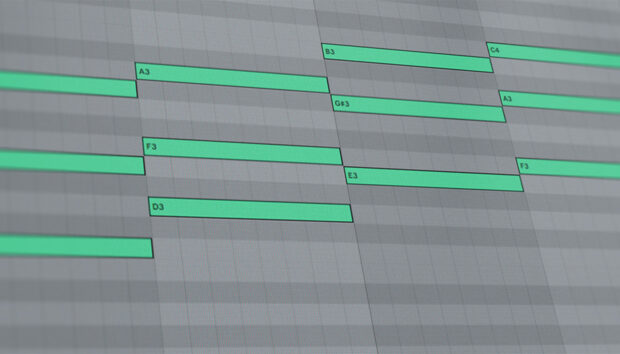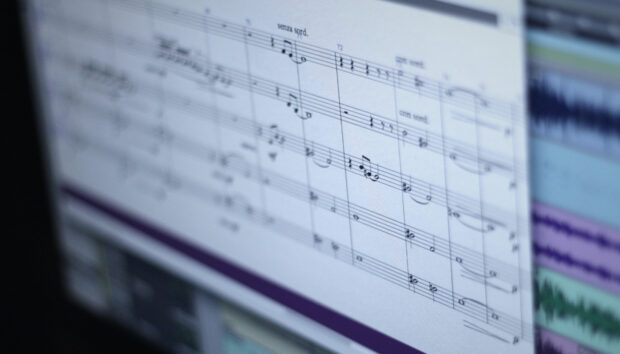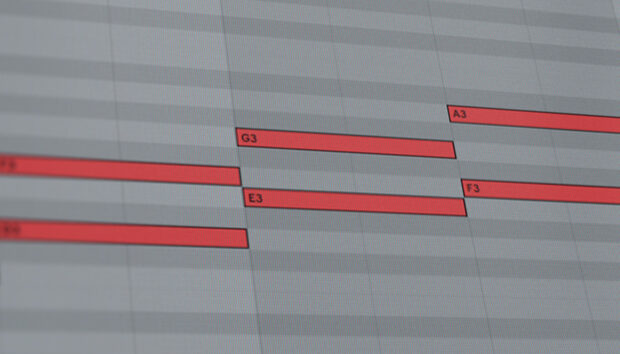
Learning how to write a pop song can prove frustratingly elusive; some kind of mystery that can only be accessed by top songwriters and producers. However, like any complex recipe, once you know the ingredients of a hit song, it’s far more simple to dissect its inner workings. Strip away modern production techniques and shimmering vocals and you’ll find that many pop songs rely on common structures, musical motifs and chord progressions.
It’s these chord progressions for pop songs that we’ll be focussing on below, with many of the following examples being instantly recognizable. Armed with some chart-topping chord sequences and a little creativity, you can learn how to write ear-worms of your very own.
Jump to these sections:
- Before we begin: know the basics of chord theory
- What are pop chord progressions?
- Top 5 popular pop chord progressions
For chord inspiration, many Native Instruments products come with various chord shapes already included. MASCHINE is a great place to start, with Chord Mode an easy way to browse interesting harmonic progressions.
Don’t forget that many Native Instruments products contain pre-built chords and riffs to get you started. From pop chord progressions on guitars to pop chord progressions for keyboards and strings, you’ll be sure to discover chords and phrases to inspire. We’ve used IGNITION KEYS for our audio examples, but feel free to play along using your own instruments or free products from Max Tundra’s guide to pop production tools.
Before we begin: know the basics of chord theory
We’re already going to assume that you have a basic idea of how a musical chord is constructed; 3 or more notes of a given scale played simultaneously to sound harmonious. Chords are named depending on their root key and their ‘shape’. Common names include major, minor and 7th. For example, C major is a chord consisting of the notes C, E & G. Chord progressions are how we describe playing a sequence of different chords. These progressions are often explained in roman numerals (such as I, IV & V for C major, F major & G major respectively) and signify the intervals between the different chords, and how they relate to one another. For a refresher on the basics of music theory, check out our guide on getting started with music theory.
Don’t worry if this all seems too technical, as we’ll be dropping plenty of links to pop songs that will help you hear the chords in context. We’ll also be encouraging you to reference the songs using Hooktheory and their crowd-sourced TheoryTab Database; an online encyclopedia of popular songs where you can visualize a song’s chords whilst listening along.
What are pop chord progressions?
A pop chord progression supports the many elements that can make a hit pop song; moving lyrics, inventive production, hummable melodies and catchy hooks. Pop chord progressions are memorable, simple, and repetitive.
In theory, it’s possible to combine pretty much any chord shapes in a sequence, but if you pick them at random you’re likely to come up with some pretty experimental sounding music. Writing pop is a far more refined discipline. As this genre is intended for mass consumption you’ll want to choose more commonly known chord progressions that sound cohesive when played together.
A good place to start is the circle of fifths, where chords move from one to another in a satisfying way. Using predictable progressions from this chord circle makes for an enjoyable musical journey as each new chord borrows a note from the previous one.
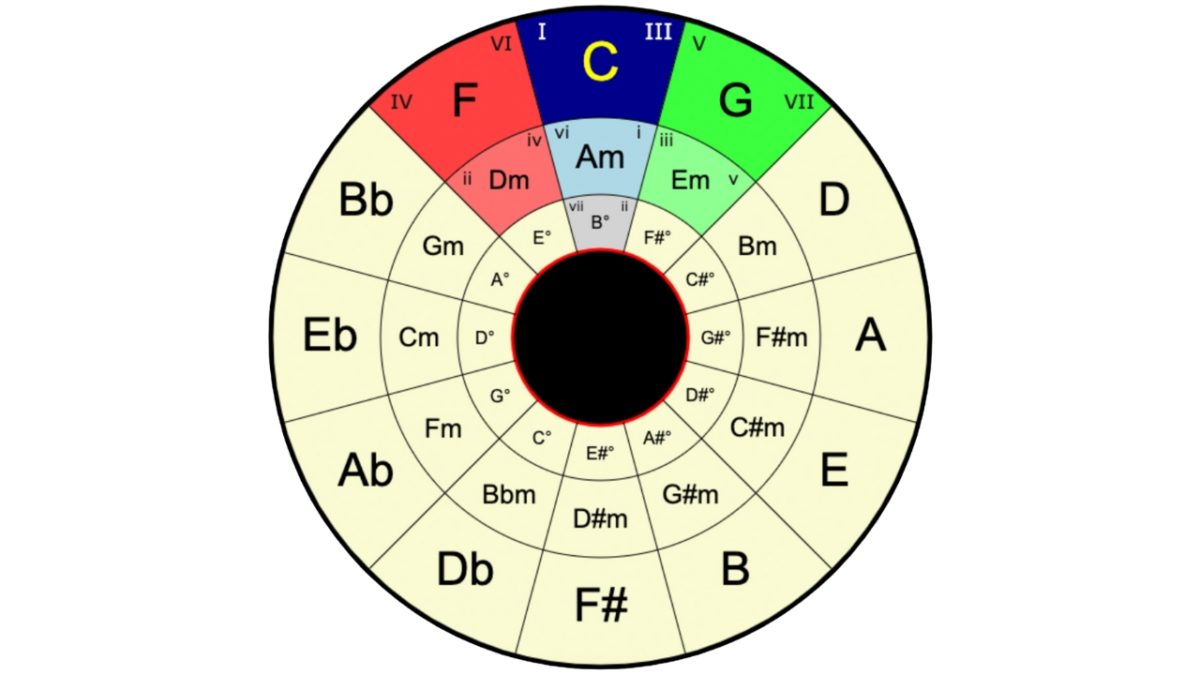
In fact, thousands of hit songs have been written that exclusively use chords in this way. If you want to dive deeper, try the interactive version at ToneGym or watch pianist David Bennett’s fascinating exploration.
Aside from the basic guidelines of the circle, there are a myriad of other ways to sequence chords for maximum impact. You’ll find that many hit songs borrow chord progressions from one another. But that hasn’t stopped artists writing fresh-sounding tracks by building new melodies and contemporary productions around familiar chords.
Top 5 popular pop chord progressions
Here are five popular pop chord progressions, all explained in C major or A minor, although you can transpose them into any other key for your own purposes. Steal, remix and augment these chord progressions to create your own spin when writing your pop song.
1. I – V – vi – IV : C major, G major, A minor, F major
The granddaddy of all 4-chord pop progressions which you will have undoubtedly seen parodied by the merciless Axis Of Awesome. Regardless of being played to death, this remains a really popular progression that has powered decades of hits from to “Torn” to “Wrecking Ball.” The fun thing about this chord progression is that it works just as well in its minor variation of A minor, F major, C major, G major (the same chords rotated).
This is a well-trodden progression for minor key pop ballads and songs with a more wistful feel. Check out Justin Beiber’s “Ghost” where the some chord changes are extended beyond the bar, or Kelly Clarkson’s “Stronger” which adds an augmented 6th to the final chord for a little seasoning. Take these two examples as inspiration for your own progressions; change the order of the chords, swap out root bass notes for others, or augment a triad with extra notes.
“Physical” by Dua Lipa is a great example; where the first 4 bars firstly play A minor, F major, C major and G major but the second time around additional notes are added to create suspensions and augmented moments of tension and resolution.
2. I – vi – IV – V : C major, A minor, F major, G major
Known in music theory circles as the Doo-wop Changes or 50’s Progression, this chord sequence might be familiar if you’ve ever attempted to play a simplified version of “Heart and Soul” on the piano.
Despite having its roots in the 1950s, you can hear this progression in songs from The Police to Meghan Trainor, so it’s the perfect progression for smoky retro-flavored productions. If you’re looking to spice up this sequence, try substituting a D minor chord in place of the F major, giving a more melancholy vibe.
3. I – V – VI – V : C major, G major, F major, G major
If you ignore the A minor chord of the previous two examples, you’ll discover this basic but timeless progression.
These three simple chords provide varying levels of tension and are flexible enough building blocks to rearrange into any number of combinations. As long as you remember to resolve to the root chord at the end of a major musical motif, you can’t go far wrong (C major in this case). Have a listen to how the artists behind “All The Small Things,” “American Idiot,” and “MMMBop” reconfigure the three chords into memorable guitar riffs.
4. I – bVII – IV – I : C major, Bb major, F major, C major
Musicians familiar with theory will know of musical modes; Ionian, Dorian, Phrygian, Lydian, Mixolydian, Aeolian and Locrian. These distinctly different modes give a scale various feels; major, minor and more ambiguous. This particular chord progression flirts with the Mixolydian mode which includes a flattened seventh (in this case the B flat) which characterizes the second chord, lending the progression a bluesy feel.
You can find this unique sequence throughout songs by Lorde and Guns & Roses.
5. I – bVII – bVI – bVII : A minor, G major, F major, G major
This is a really interesting chord progression with a circular feel as the second and forth chords are the same. This minor version is probably most recognisable from “Rolling In The Deep” or “Somebody That I Used To Know,” but it can be played in a number of interesting variations, including substituting an E major (V) for the final chord, as heard in Christina Aguilera’s “Genie In A Bottle” and is named the Andalusian cadence, a term adopted from traditional Flamenco music.
One of the reasons this chord progression is so satisfying is that it moves up and down the scale in a uniform way, with a tone between the root note of the chord, giving the music a languid rolling quality. You may also hear songs using a major variation of this progression, switching the first chord to A major in this case.
Start producing your own pop chord progressions
Now you’ve learnt how the pros design their chord sequences, you’re ready to create your own pop chord progressions. As a musician, your ear is naturally a good judge of what works and what doesn’t, so experiment with chord types and shapes until a progression sounds like it’s coming together.
Don’t be disheartened if you start off by copying progressions from popular songs, or if you think your ideas are too simple. After all, the song “Unholy” constantly repeats just two major chords and it’s been a runaway smash for Sam Smith. If your production skills and musical ideas are rock solid, the chords you choose will be the last thing that people notice.
And if you’d like to dive even deeper with writing songs with KOMPLETE KONTROL, check out the range of keyboards available to start creating your perfect pop sound.











